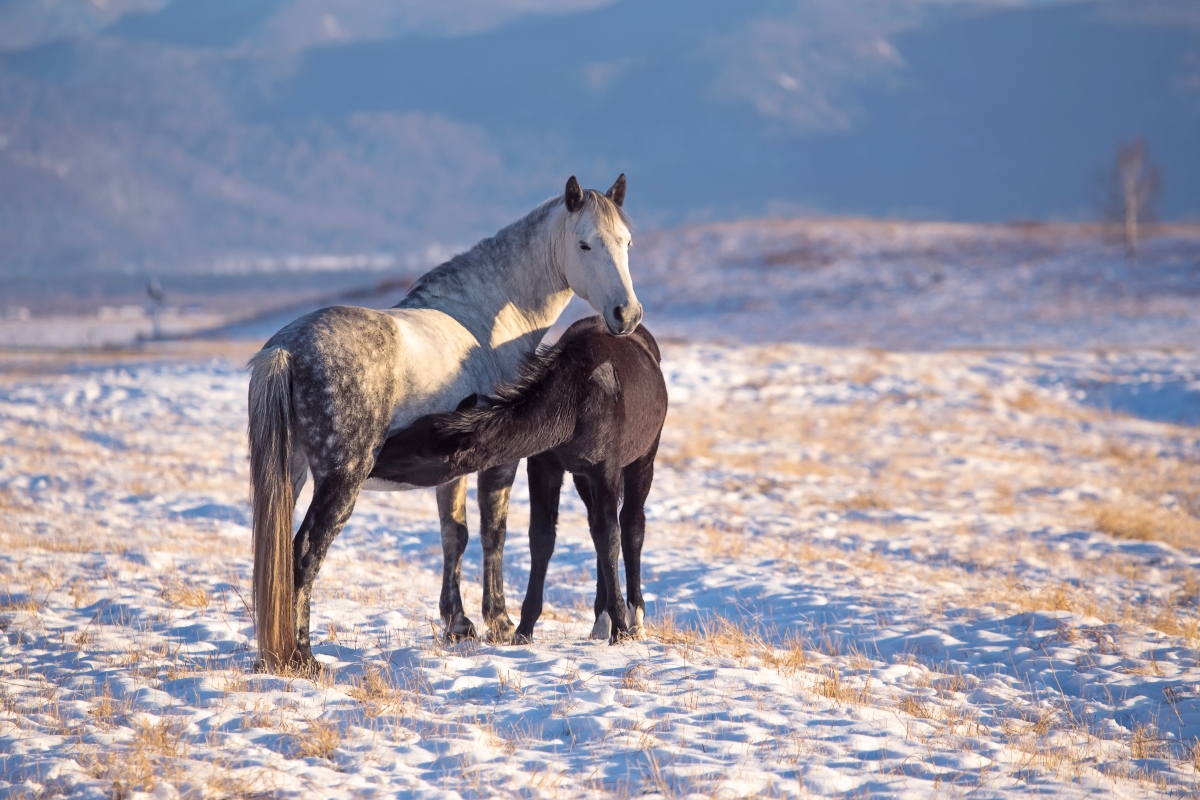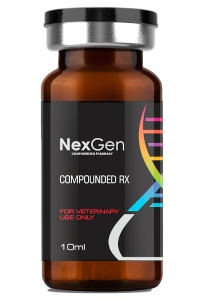Understanding the Mare's Estrous Cycle Chart

Despite their relatively long gestation period of 335 to 360 days, horses have the potential for fairly high reproductive performance.1 Understanding as much as possible regarding the mare's breeding cycle can give horse owners and breeders an edge with regard to achieving their breeding objectives.
"The primary environmental factor causing mares to cycle normally is increased hours of light (photoperiod). Artificial lighting can be used to induce mares to cycle earlier in the year."1
The estrous cycle, which is to be distinguished from estrus itself (the "heat" portion of the estrous cycle), begins to normalize in late April or early May through August, which is the normal breeding season for horses. During this period, mares will have an estrous cycle of approximately 21 days.
The estrous cycle consists of two phases:
- The estrus phase (in heat), and
- The diestrous phase (out of heat).
Estrus typically lasts for approximately six days, but can be as short as four or as long as ten days. This is usually individually dependent on the mare. The diestrus portion of the cycle lasts approximately 15 days, but can vary from 12 to 18 days. From September through March, mares stop cycling normally. This is called anestrus.
While ovulation (release of the egg from the ovary into the fallopian tubes) can occur at any time during the estrus phase, this usually takes place between 24 and 48 hours prior to the end of the estrus (heat) phase.2 The available literature strongly suggests that in order to maximize the chance of conception, the mare should be bred within 12 hours of ovulation.
"The mare's first estrus phases of each year are often erratic and prolonged, during which time mares may be in heat for 20-30 days or more."1 During late March, through late Spring and Summer, the mare's cycle becomes more regular, with most mares exhibiting sexual receptivity. It has been reported that very few of the mare's early Spring heats result in actual ovulation, therefore it is not recommended to breed mares during this time without rectal palpation of the ovaries to determine follicular development.2
Hormonal Activity During the Estrous Cycle
The estrous cycle is controlled by hormones, as illustrated in the estrous cycle chart. The pituitary gland, which is located at the base of the brain, produces follicle-stimulating hormone and luteinizing hormone. "As Spring approaches, the pituitary gland is stimulated by increased daylight to enhance follicle-stimulating hormone production. Follicle-stimulating hormone is released into the blood stream and travels to the ovaries to initiate development of a follicle containing an ovum. The developing follicle produces estrogens, which are released into the bloodstream."2
When the mare's blood estrogen reaches a certain level, the pituitary gland is stimulated to release a surge of luteinizing hormone into the bloodstream. This causes the follicle on the ovary to rupture, which causes ovulation.
What happens next remains one of the more fascinating aspects of mammalian reproduction. The cavity left by the ruptured follicle becomes engorged with blood to form a corpus hemorrhagicum, which then luteinizes to form the corpus luteum.
As the corpus luteum develops, it starts to produce progesterone, which influences the pituitary gland and reproductive tract. The feedback of progesterone via the blood stream inhibits the release of luteinizing hormone. Under the influence of progesterone, the mare will not display estrus. Here, progesterone's function is to maintain the pregnancy by maintaining a uterine environment conducive to fetal development.1
To Conceive, or Not to Conceive
There is a complex interplay of hormones following successful breeding of the mare. Regression of the corpus luteum takes place, followed by a rise in equine chorionic gonadotropin due to hormonal action between the corpus luteum and fetal membranes. This stimulates secondary follicular development and luteinization, which once again gives rise to the production of progesterone, thus sustaining the pregnancy to term.1
If the mare does not conceive, the corpus luteum remains functional for about 12 to14 days. "At this time, prostaglandin is released from the endometrium (inner lining of the uterus). Prostaglandin has a luteolytic effect - it acts on the corpus luteum via the bloodstream, causing it to regress. As the corpus luteum regresses, progesterone levels are reduced, resulting in the removal of the inhibition to luteinizing hormone secretion. The cycle starts over again."1
1omafra.gov.
2equine-reproduction.com.
 Equine Breeding Products
Equine Breeding Products
You can find equine breeding products in our online store. Login to your account to view prices and purchase or create an account. Please note you must have a valid veterinarian license to create an account. If you do not, please forward our information to your veterinarian.
About NexGen Pharmaceuticals
NexGen Pharmaceuticals is an industry-leading veterinary compounding pharmacy, offering sterile and non-sterile compounding services nationwide. Unlike other veterinary compounding pharmacies, NexGen focuses on drugs that are difficult to find or are no longer available due to manufacturer discontinuance or have yet to be offered commercially for veterinary applications, but which still serve a critical need for our customers. We also specialize in wildlife pharmaceuticals, including sedatives and their antagonists, offering many unique options to serve a wide array of zoo animal and wildlife immobilization and anesthesia requirements.
Our pharmacists are also encouraged to develop strong working relationships with our veterinarians in order to better care for veterinary patients. Such relationships foster an ever-increasing knowledge base upon which pharmacists and veterinarians can draw, making both significantly more effective in their professional roles.
Disclaimer
The information contained in this blog post is general in nature and is intended for use as an informational aid. It does not cover all possible uses, actions, precautions, side effects, or interactions of the medications shown, nor is the information intended as medical advice or diagnosis for individual health problems or for making an evaluation as to the risks and benefits of using a particular medication. You should consult your veterinarian about diagnosis and treatment of any health problems. Information and statements have not been evaluated by the Food and Drug Administration ("FDA"), nor has the FDA approved the medications to diagnose, cure or prevent disease. Medications compounded by NexGen Pharmaceuticals are prepared at the direction of a veterinarian. NexGen Pharmaceuticals compounded veterinary preparations are not intended for use in food and food-producing animals.
NexGen Pharmaceuticals, LLC does not recommend, endorse or make any representation about the efficacy, appropriateness or suitability of any specific dosing, products, procedures, treatments, services, opinions, veterinary care providers or other information that may be contained in this blog post. NEXGEN PHARMACEUTICALS, LLC IS NOT RESPONSIBLE NOR LIABLE FOR ANY ADVICE, COURSE OF TREATMENT, DIAGNOSIS OR ANY OTHER INFORMATION, SERVICES OR PRODUCTS THAT YOU OBTAIN THROUGH THIS BLOG POST.



